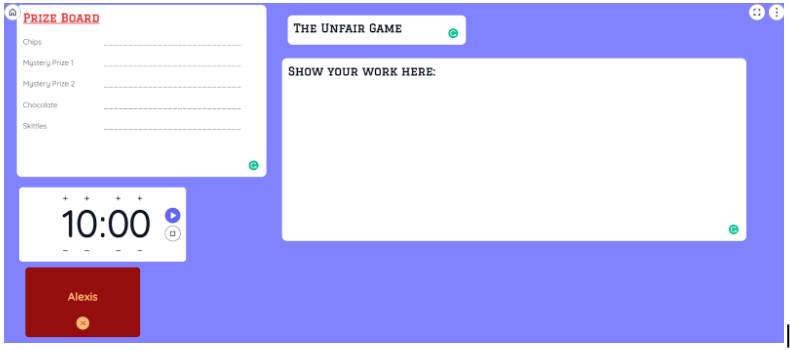To prepare for an upcoming test or quiz, I like to provide my students with a study guide or practice test. It’s a great formative assessment tool for teachers and students. And parents always appreciate a good study guide as well.
However, I feel like going through a study guide as a review can be monotonous for students. One of my professors said that a student’s attention span measured in minutes is approximately equivalent to their age. For example, a 10-year-old student can pay attention for about 10 minutes. And that number maxes out at around 12 minutes for most secondary students (as well as adults). In short, they get bored easily!
Over the past few years, I’ve used a number of strategies to keep my students engaged while reviewing for an upcoming assessment. Recently, I tried playing The Unfair Game with my students and they adored it! The prep is super easy and yields very high student engagement. Variations of this game are trending on social media. Here’s how I made it work for my students.
How To Play “The Unfair Game”
1. Prepare a study guide and share it with students.
Sharing the questions in advance helps keep the risk environment low. We like to reduce student anxiety where we can 🙂
2. Create a prize board with five prizes.
See the figure below.
3. Call on a student volunteer to come to the whiteboard and complete a problem from the study guide.
You can randomize the problems or go in order; take volunteers or call on students. Whatever works best for your class.
4. If the student gets the problem correct, they can claim a prize.
If the student is incorrect, call on another student to attempt the problem.
5. Continue calling on random students to complete problems on the board.
6. Once all five prizes are claimed, students can steal a prize spot from someone else.
This is what makes it “unfair.”
7. The game ends when all of the problems are completed or time is up.
To make this game run more smoothly, I used Classroomscreen. Classroomscreen has a random-name guesser that makes this game a breeze to manage. Additionally, I used it to create my prize board as seen in the image above. Check it out here: classroomscreen.com.
As I mentioned earlier, this game yields very high engagement! My experiences have led me to believe that they truly paid attention and wanted to get their math problems correct to steal the prizes. My students love The Unfair Game and are always asking when we’ll play it again!
Have you played “The Unfair Game”? Let us know your tips in the comments.
Looking for more articles like this? Be sure to subscribe to our newsletters!


